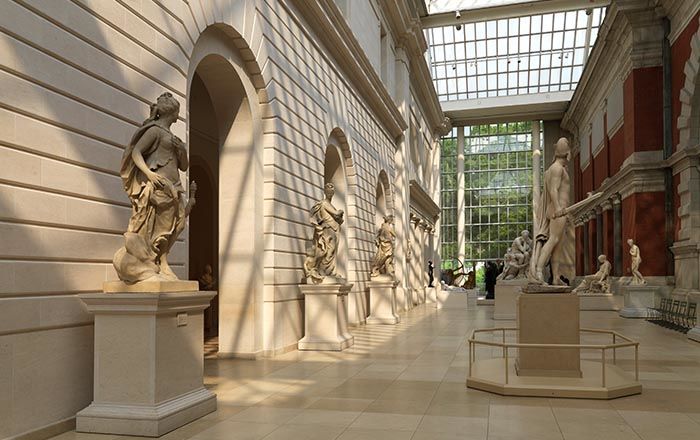Tarquin and Lucretia
After a composition by Hubert Gerhard Netherlandish
The design is a compositional outgrowth of Hubert Gerhard’s Mars, Venus, and Cupid. His large bronze group with that subject, cast in 1584–85 as the centerpiece for a fountain at the Fugger castle, Kirchheim, is now in the Bayerisches Nationalmuseum, Munich, and a fine reduction, with modifications, is in the Kunsthistorisches Museum, Vienna. The Tarquin and Lucretia is a further variant in which the movements of both figures are directed more violently to the right. Several examples exist—in museums in Amsterdam, Baden-Baden, Baltimore, and Cleveland, among others. The strongest may be the one in the Metropolitan Museum (50.201; from the Thyssen collection, Schloss Rohoncz).[1] It preserves something of Gerhard and his school. The present bronze is sleeker, and of a yellowish metal covered with the ruddy lacquer patina that is typical of bronzes of the Louis XV period.
The masks on the self-base are equipped with spouts that suggest a table fountain. The masks also appear on the group with which this bronze was formerly paired: a Rape of Deianira, based on a composition by Giovanni Bologna, which is now in the Statens Museum for Kunst, Copenhagen. That museum’s catalogue notes the earliest owner of both bronzes as Baron Vittinghodd-Riesch. Later they belonged to Gorm Rasmussen of Sølyst. In the Rasmussen auction catalogue the two bronzes are illustrated surmounting commodes.
[James D. Draper, 1984]
Footnotes:
[1] For a list of the several casts, see W. D. Wixom, Renaissance Bronzes From Ohio Collections (exhib. cat.), The Cleveland Museum of Art, 1975, no. 213.
This image cannot be enlarged, viewed at full screen, or downloaded.


